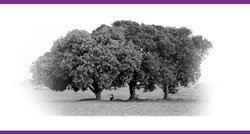Rato Dratsang Foundation
The re-established Rato monastery and its new temple, inaugurated 2011
The Rato Dratsang Foundation was created by the Reverend Khyongla Rato Rinpoche, a lama and scholar who studied at the original monastery, the Venerable Khen Rinpoche Nicholas Vreeland, an American student of Rinpoche's and an ordained Buddhist monk and member of Rato Dratsang, and their friends and colleagues. The goals of the Rato Dratsang Foundation are to generate financial support for the monastery, establish scholarly affiliations with Western centers of higher education, provide for the translation and publication of important writings currently unavailable to English and Chinese speaking people, and establish a sister monastic college in the west.
The mission of Rato Dratsang Foundation (RDF) is to generate financial support for the monastery; to preserve its traditional presentation of logical analysis and to establish a dialogue with Western centers of learning.
The enlightened science of Buddhist Logic, a powerful antidote to the suffering caused by mental confusion, remains virtually unknown to modern "Western" thought. Based upon the authentic teachings of the Buddha by the Indian pandits Dignaga and Dharmakirti, the tradition was nurtured and maintained to the present day in the great monastic colleges of Tibet, particularly Rato Dratsang.
Rato Monastery, Lhasa TIBET
This great center for intellectual development and spiritual practice was located just outside Lhasa, Tibet, from its founding in the fourteenth century by Tak Pa Zang Bo until the destruction of its physical structure in 1959. Rato Dratsang has been reestablished in Mundgod, in the south Indian state of Karnataka, by a group of scholars and monks educated at the original monastery. The Rato Dratsang Foundation was formed to assist in the redevelopment of this great center of learning, to preserve its traditional presentation of logical analysis, and to establish a dialogue with Western centers of learning.
In Tibet, Rato Dratsang was a scholastic monastery of over four hundred residents. While studies in all branches of Buddhism were pursued, leading to the Doctor of Divinity or "Geshe" degree, it was most renowned as a center for the study of logic. Students were expected to become completely familiar with the methods and rules of traditional Buddhist logical analysis. Texts were memorized and meditated on until their meaning was thoroughly absorbed. A student's grasp of the subject was tested and tempered by frequent intense debates held under highly formalized rules.
Rato Dratsang was host to scholars from many other monasteries during a yearly month-long "Jang" session held in the wintertime. Students came from many parts of Tibet and from the other monastic universities around Lhasa to study the original texts and commentaries, attend lectures and take part in enthusiastic dialectical discussions. The teachings were thus transmitted to successive generations as a practical method for mental development.
The reestablished monastery in the south of India currently houses over one hundred monks and the number of monks at Rato Dratsang constantly grows. A small two-story structure was built by the few surviving Rato monks who reestablished their monastery on land supplied by neighboring Tibetan monasteries in exile. A temple is presently under construction, and more monks' rooms are needed. There are insufficient material resources to support the many monks and scholars who wish to study at the monastic college.
The great fifth Dalai Lama (1614-1682) said the following verse in praise of Rato Dratsang, also known as Tiger Nest Monastery:
In the heart of the dense forest of
Scriptural knowledge,
Lies the Tiger Nest sounding
The roar of the wisdom of logic.
May the study of logic to clear the minds,
Forever develop in the boundaries of the upper,
middle, and lower parts of the land of snow.



